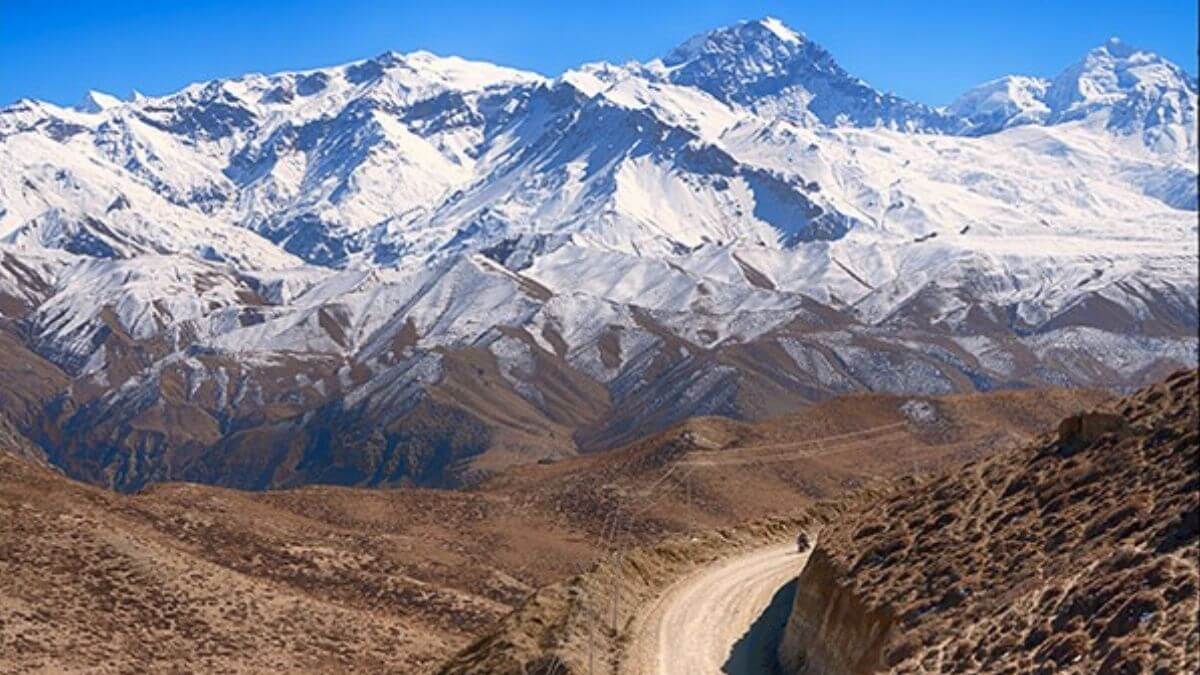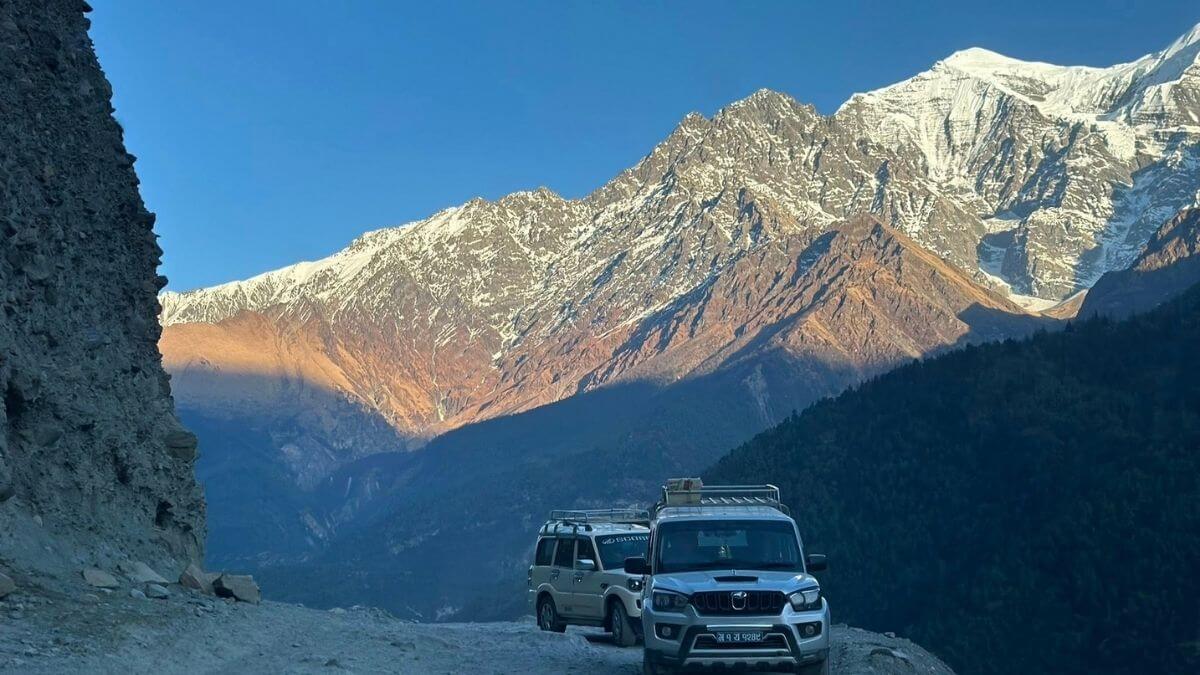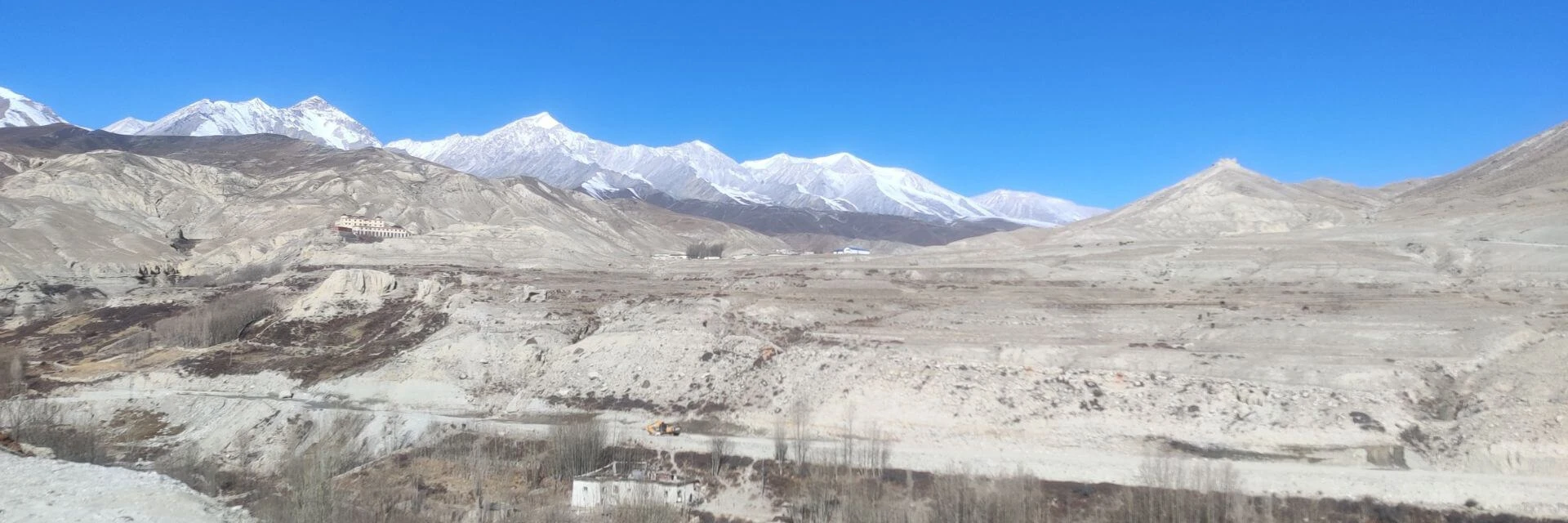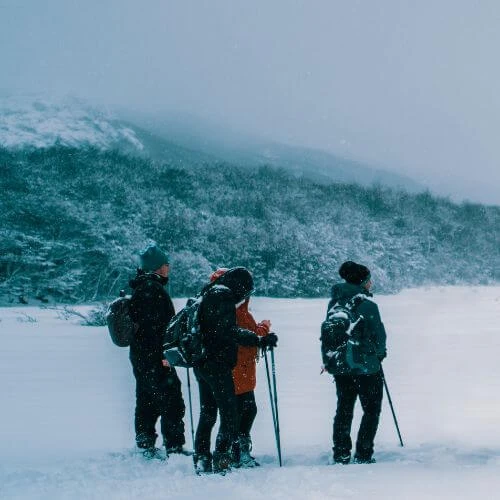Nepal recently made a major change affecting anyone planning a Nepal Upper Mustang trek. For years, travelers had to pay a USD 500 Upper Mustang Trekking fee to enter the restricted region. This was a significant cost barrier for first-time trekkers, often shaping early travel decisions. With the fee removed, the region becomes far more accessible, allowing beginners and budget-conscious travelers to consider this unique Himalayan experience.
This blog explains the policy update in simple terms, what it means for trekkers, and the permits and rules that remain. You’ll also find beginner-friendly insights into costs, highlights, and planning considerations for Upper Mustang.
Thinking of travelling to Nepal for once in a lifetime adventure? Visit Abound Holidays and explore the best trekking destinations in Nepal.
Overview of Nepal Upper Mustang Trekking Fee Change
The Upper Mustang region previously required a USD 500 Upper Mustang Trek fee for a minimum 10-day stay. This flat fee was designed to regulate access to the restricted area. In late 2025, the Government of Nepal officially replaced this system with a daily permit rate of USD 50, removing the upfront lump sum.
For general travelers, this change reduces the cost barrier and allows shorter or more flexible trips. While the region remains restricted, the daily fee simplifies early research and planning for first-time trekkers.
Quick facts:
- Old Upper Mustang daily fee: USD 500 flat for the first 10 days.
- New daily rate: USD 50 per day, applied from day one.
- Permits remain required for entry.
- The change is formalized under Schedule 12 of the Immigration Regulations, giving it legal recognition.
Why Did Nepal Scrap USD 500 Upper Mustang Trekking Fee?
The government aimed to make the Nepal Upper Mustang trek more accessible while boosting tourism and local economies. Removing the large upfront fee helps attract more travellers, especially first-timers who were previously deterred by the cost.
Local communities and trekking agencies welcomed the change, expecting increased visitor interest while maintaining controlled access under restricted area rules.
Key reasons:
- Encourage tourism and regional economic growth.
- Lower financial barriers for travelers.
- Maintain cultural and environmental protections.
- Respond to local feedback and changing travel patterns.
What the Decision Means for Trekkers
The fee removal affects budgets, accessibility, and early research considerations. Travellers can now plan shorter trips without paying USD 500 upfront. Some rules remain unchanged: permits and licensed guides are still mandatory.

The policy benefits multiple types of travellers, including budget-focused trekkers, cultural explorers, and those new to Nepal. It also makes it easier to compare Upper Mustang with other trekking regions.
If you’re travelling solo in Nepal, these new rules can help you narrow down your options.
Current Permit Requirements After Removal of the Fee
Even with the Upper Mustang Trekking fee gone, Upper Mustang is still a restricted area. Trekkers must obtain a Restricted Area Permit (RAP) and a TIMS card. The new daily fee replaces the old flat USD 500 charge but does not remove existing entry requirements.
Permits help manage visitor numbers, protect cultural sites, and ensure safety in this remote region. Beginners should note that permits are easiest to obtain through registered trekking agencies.
TIMS and Other Mandatory Permits
- RAP and TIMS remain required.
- Application is through a licensed trekking agency.
- Steps: passport copy, travel dates, photo, and basic information.
- Misunderstandings: Some think the fee removal eliminates permits — this is incorrect.
Guide and Trekking Agency Regulations
- Guides remain mandatory in 2025.
- Mandatory guides ensure safety, manage sensitive terrain, and help protect culture.
- First-time trekkers should choose licensed guides through registered agencies.
Is Upper Mustang Now Cheaper to Visit?
Upper Mustang is now more affordable because the old USD 500 flat fee has been replaced with a daily permit fee of USD 50. This gives trekkers flexibility and lowers the initial cost barrier.
Example:
- Old system: 10-day minimum, USD 500 flat fee, even if you stayed only 5 to 7 days.
- New system: Pay USD 50 per day. A 5-day trek costs USD 250, a 7-day trek USD 350 — you pay only for the days you spend in Upper Mustang.
All other requirements remain the same: a licensed guide is still mandatory, and trekkers must obtain a Restricted Area Permit (RAP) before entering. The amendment is formalized under Schedule 12 of the Immigration Regulations, giving the daily fee legal recognition.

Budget planning still includes guides, transport, accommodation, and food, but the daily fee system allows more control over total costs.
Upper Mustang Highlights for First-Time Readers
Upper Mustang is famous for its ancient culture and dramatic high-desert landscapes. It differs from greener Himalayan treks, offering a unique combination of history, heritage, and wide open valleys. These features attract travellers exploring the Nepal Upper Mustang trek for the first time.
Culture and Heritage
- Former Kingdom of Lo and Tibetan-influenced traditions.
- Monasteries, cave settlements, and the Lo Manthang heritage site.
- Festivals and local customs remain central to the region’s identity.
Landscape and Scenery
- High desert terrain, canyons, and wide mountain vistas.
- A distinct contrast from greener Himalayan routes like Annapurna.
- Famous viewpoints and natural formations attract photographers and trekkers alike.
- If Upper Mustang doesn’t match the kind of experience you’re looking for, check our Nepal Trekking packages.
Visiting Upper Mustang After the Fee Removal
The removal of the Upper Mustang Trekking fee brings both advantages and some challenges for travellers. While the daily permit system makes the region more accessible and affordable, first-time trekkers should also consider factors like increased visitor numbers and the remote, high-altitude environment.
Benefits:
- Lower entry cost for budget-conscious travellers.
- Easier access for first-time visitors.
- Increased interest helps local communities economically.
Challenges:
- Higher visitor numbers may cause minor crowding.
- Remote location still requires careful planning.
- This balanced view helps first-time researchers understand the bigger picture without exaggeration.
Final Thoughts
The removal of the Upper Mustang Trekking fee makes the region more accessible, reduces upfront costs, and provides more flexibility for first-time researchers. Travellers can now consider shorter treks, plan budgets more accurately, and focus on exploring the unique culture and landscapes of Upper Mustang.
Abound Holidays offers local expertise to help you understand new rules, secure permits, and arrange licensed guides. Whether it’s your first visit or part of broader Nepal trekking research, our team provides practical advice and friendly support to make planning easier.
Plan your trekking adventure in Nepal with Abound Holidays. Contact our experts for your trekking adventure in Nepal.
FAQs
1. What was the old Upper Mustang trekking fee?
The old fee was a flat USD 500 for a minimum 10-day stay, known as the Upper Mustang Trek fee or Upper Mustang daily fee. This fee no longer applies, and the daily rate of USD 50 has replaced it.
2. Is Upper Mustang still considered a restricted area?
Yes. The Upper Mustang restricted area permit is still mandatory. Even with the fee change, the region remains controlled to protect culture and safety.
3. Do trekkers still need a guide after the fee removal?
Yes. Licensed guides are still required in 2025. They help with safety, navigation, and permit compliance in the restricted Upper Mustang region.
4. What permits are required in 2025 for Upper Mustang?
Trekkers need a Restricted Area Permit (RAP) and a TIMS card. The daily permit fee replaces the old flat USD 500, but permits remain essential.
5. Is Upper Mustang more affordable now?
Yes. Shorter treks are cheaper because the fee is charged per day. However, total trip costs still include guides, transport, accommodation, and food.
6. How long does the Upper Mustang trek usually take?
Most treks take 10–14 days, depending on the route and pace. A typical itinerary includes Lo Manthang and key cultural sites.
7. Will Upper Mustang see more tourists after the fee change?
Likely, but restricted area rules still control visitor numbers to protect the region’s culture and environment.
8. What makes Upper Mustang different from other trekking regions?
It combines high desert landscapes, Tibetan-influenced culture, and centuries-old heritage. Compared to greener treks like Annapurna, Upper Mustang offers a unique and quiet experience.




